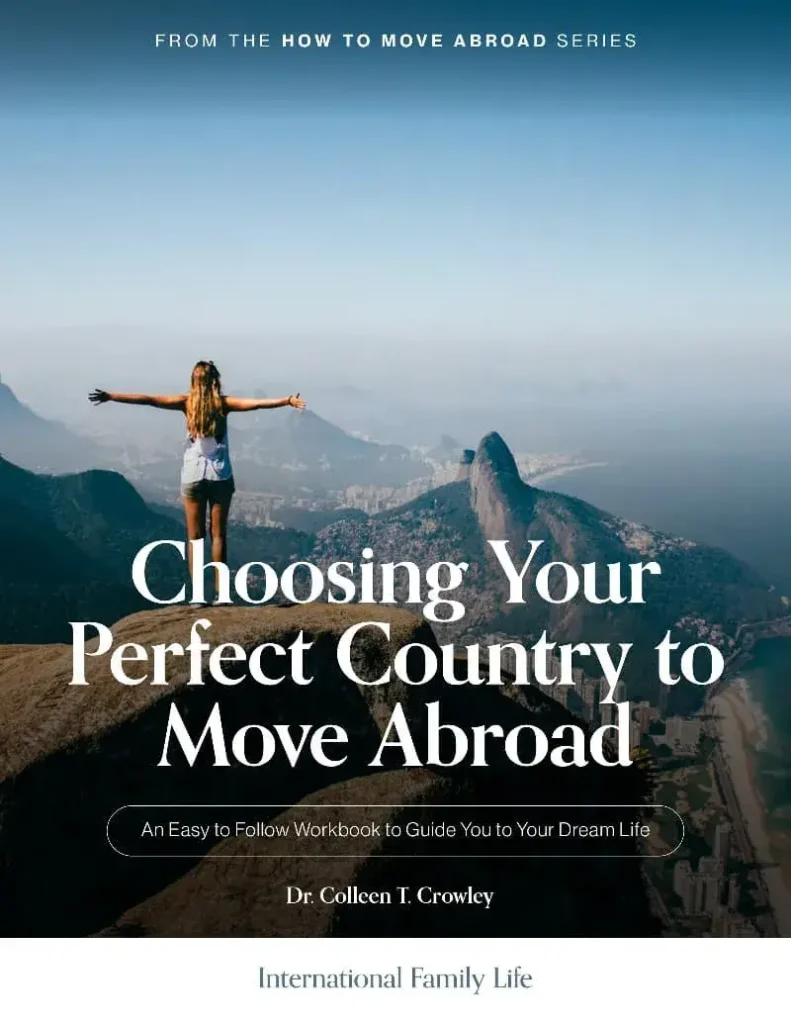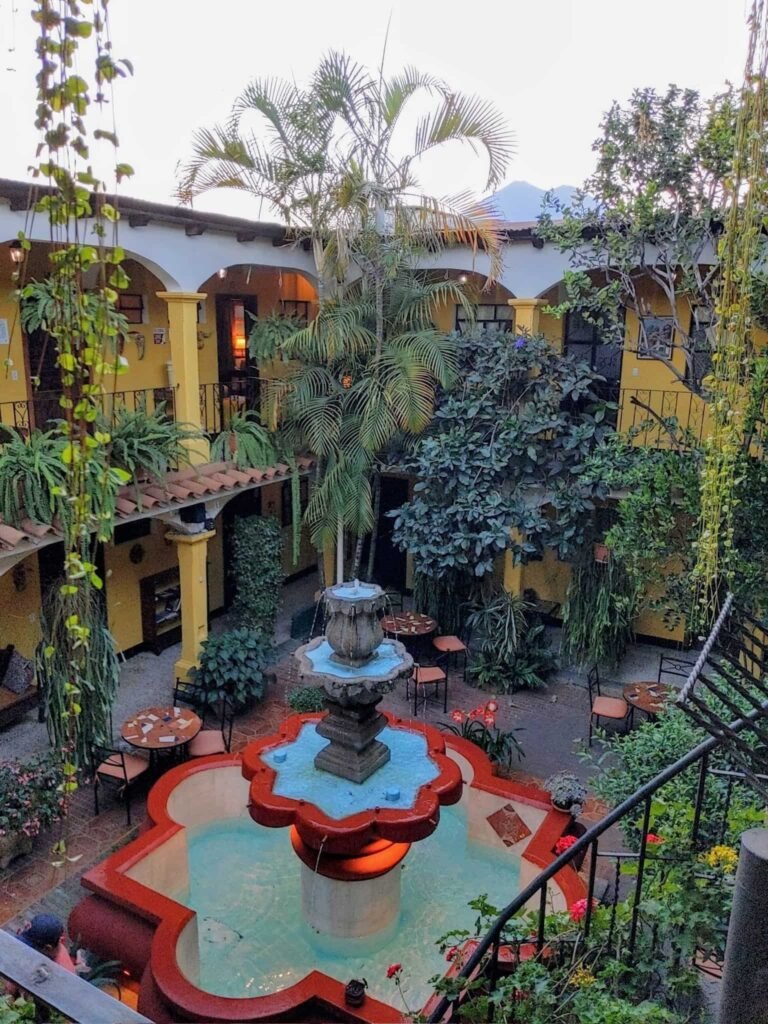Moving To Colombia: Everything You Need To Know
|
Are you considering moving to Colombia? This rising star in Latin America has plenty to offer foreigners interested in affordable expat living. Colombia offers landscapes ranging from bold Andean peaks to white-sand beaches, tropical heat to chill mountain weather, and cities with metropolitan vibes to laidback island atmospheres.
But any overseas move comes with long to-do lists, paperwork hurdles, and uncharted territory. We’re here to make your transition as smooth and headache-free as possible. Discover the requirements to enter Colombia, plus a step-by-step guide to moving here.
This post may contain affiliate links. If you purchase through these links, we may earn a small commission at no extra cost to you. You can find more information in our disclaimer.
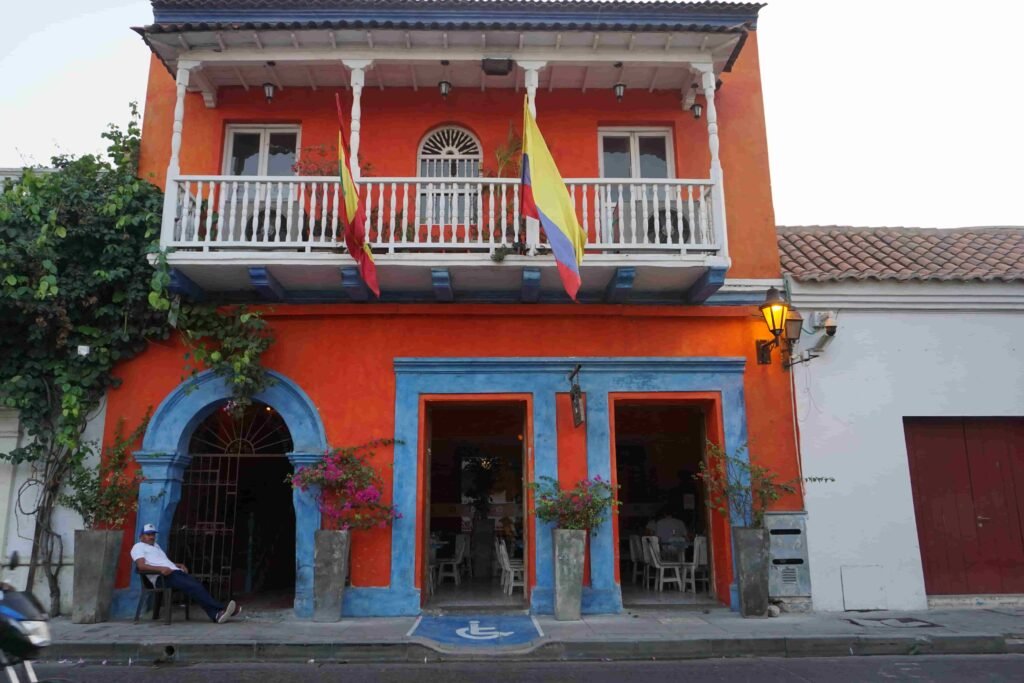
Can You Move To Colombia?
Yes! Colombia is a beautiful and diverse country with a relatively low cost of living, vibrant culture, and modern amenities. It has one of the best healthcare systems in the world, excellent international schools, and multiple visa options for foreigners.
Requirements To Move To Colombia
To enter Colombia, you’ll need the following paperwork:
Note: Depending on what country you’re from, you may need to complete additional steps to enter, including going to a Colombian consulate. Many, but not all nations are exempt from needing a tourist visa. Check the official website for more information.
1. A Valid Passport
If you plan to live in Colombia in the mid-to-long term, make sure your passport is valid for at least a couple of years. That way you won’t have to worry about it expiring in the midst of other in-country paperwork.
Tip: It’s a good idea to renew your driver’s license before moving as well.
2. Proof of Health Insurance
Colombia requires foreigners to prove they have health insurance in order to enter the country. You can choose to get something temporary and then look into local insurance options, or opt for expat-tailored insurance packages such as those offered by SafetyWing.
Make sure your health insurance meets Colombia’s coverage requirements.
3. A Local Address
Even if all you have is the address of your Airbnb or hotel, that is good enough for starters. Make sure you have this information on hand.
4. Proof of a Return Ticket
Some travelers to Colombia are turned away because they don’t have an exit ticket, also called proof of onward travel. This requirement can be frustrating if you plan to live in Colombia indefinitely. To get around it, purchase a fully refundable ticket on the day of your flight to Colombia. The ticket should state that you can get a full refund with no restrictions if you cancel within 24 hours. Use this as your proof of onward travel, then cancel it as soon as you reach your accommodations in Colombia.
5. Fill out the CheckMig Form
Before entering, you’ll need to fill out a digital immigration form called CheckMig. The form requires basic information such as your flight number, airport of entry, and local address.
6. Obtain Documents Needed For Visas/Residency
Colombian visa requirements vary depending on the type, but you will likely need official documentation from your home country. These documents may need to undergo a lengthy and complicated validation process referred to as an apostille (also called document legalization or authentication), which will be much easier to do before leaving your home country. Learn more about apostilles here.
Check with an immigration or visa lawyer in Colombia to see what documents you will need beforehand, and which must be apostilles. Be sure to ask whether the documents must have been issued within a certain time period to be accepted.
Documents needed for a visa may include:
👉🏻 Criminal Background checks
👉🏻Marriage certificates
👉🏻 Certificates of Pension or Social Security
👉🏻 Bank Statements (to prove you can cover living expenses)
👉🏻 Business Plans with letters of explanation
👉🏻 Birth Certificates
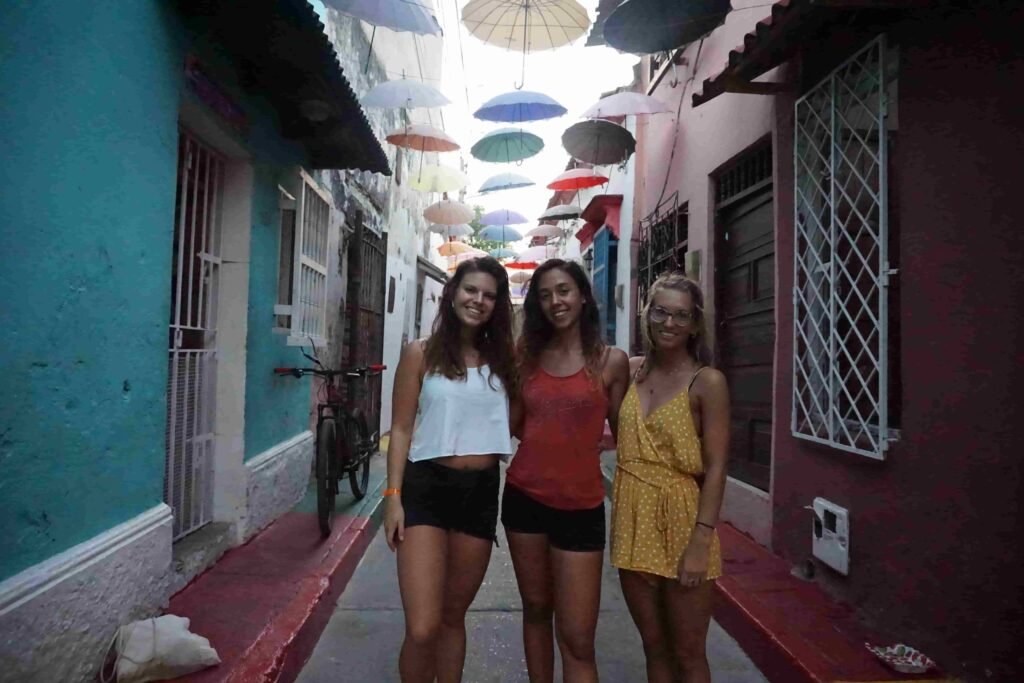
Step By Step Guide To Moving To Colombia
Moving is an exciting time, but it can be overwhelming. There is a lot to do to prepare, and then there are more things to do once you land in your new country of residence.
These steps will help you get ready to go and give you tips and suggestions for getting comfortable in Colombia.
✔️ Research Visa Options
One of the most important steps before moving to Colombia is researching your visa options. Without a solid legal status, your plan to move overseas could falter before it gains any momentum.
While it’s possible to enter Colombia as a tourist and stay 90 days (with the option to renew once), if you want to stay longer-term, obtain a work permit, start a business, retire, or otherwise make the country your permanent home, you’ll need a visa.
Understanding the options can be tricky, so be sure to thoroughly research. Talking to an immigration or visa lawyer is a great place to get information. Be sure to ask what documentation you need and make sure you give yourself enough time to gather everything.
There are 21 different kinds of visas in Colombia, but some of the most popular include the student visa, digital nomad visa, investment visa, retirement/pensioner visa, and business visa. Learn more about your visa options.
Tip: Once you’ve obtained your visa, be sure to register with the Special Administrative Unit of Colombia’s Migration arm of the government within fifteen days of entering the country. You’ll be issued a foreign ID card. Be sure to let them know if you change your address or place of employment.
✔️ Budget For Your Move
Another one of the first things to consider is finances. Fortunately, Colombia has a fairly low cost of living.
According to Expatra, Colombia is 125% less expensive than Sweden, 149% cheaper than the UK, and 229% cheaper than the USA. That doesn’t necessarily mean you’ll spend less, though. A lot depends on your lifestyle choices. It is possible, for example, to spend either $3 or over $100 on a meal out. But overall, you’ll get more for your money in this Latin American country than you would in many first-world nations.
That said, it’s important to have enough income or savings to cover your expenses, account for emergencies, and cover the costs of moving and applying for a visa.
✔️ Be In The Know About Banking and Taxes
In addition to budgeting for your move, it’s good to know how to get money once you’re in the country, what you’ll need to open a bank, and tax considerations.
Getting Money
ATM fees can add up fast, so it’s wise to devise a plan to avoid them. The easiest way is to use a credit card with zero international transaction fees and/or a debit card that reimburses ATM fees (like those from Charles Schwab).
If you need to transfer larger amounts of money for business purposes, you can use services such as Wise, Remitly, Xoom, and Mercury. Their rates are more favorable than the expensive wire fees charged by traditional banks and often feature easy-to-use websites and apps.
Opening a Bank Account
Once you are settled in Colombia and have an ID card or cédula, you can open a bank account. Usually, you’ll also need to show your visa and proof of address. Opening a bank makes it easier to send money transfers directly to Colombia from your home country. Having a local bank and debit card will make it easier to pay rent and utilities and to receive payments.
Two popular banks among expats are Banco de Bogotá and Bancolombia but do your own research.
Tax Considerations
If you become a tax resident of Colombia, you will be required to report and pay taxes on all of your income from anywhere in the world, including self-employment, pension, employment, and investment income from both inside and outside of Colombia.
Anyone who holds a visitor visa is not considered a tax resident of Colombia.
You’re considered a tax resident of Colombia if you meet the following criteria:
- You’re present in Colombia for 183 days total (they don’t have to be consecutive)
- Your main personal and economic activities are carried out in Colombia (i.e., it is your “center of vital interests).
Income tax rates vary by income bracket and range from 0 to 39%.

✔️ Research Education Options (If you have kids)
If you’re moving to Colombia with your family, you’ll need to decide where to put your kids in school.
Although homeschooling and online classes are options, public and private schools offer more social and cultural opportunities. International schools are popular among expat families since they tend to offer higher-quality education and international accreditation.
Look for schools in the areas you’re most interested in, ask for recommendations on expat forums, and visit the schools once you arrive.
✔️ Decide Where You Want to Live
Colombia’s varied landscapes mean you can choose your favorite landscape and climate when considering where to put down roots.
The Andes Mountains cut through Colombia, offering cool temperatures ranging from 50°F to 66°F. But if you prefer hot weather, the Pacific or Caribbean Coasts offer tropical temperatures averaging 82ºF year round.
Some areas of Colombia are more expensive than others, so that is something to consider as well.
✔️ Find a Non-Scammy Rental
It’s a given that you’ll need somewhere to stay once you arrive. Unfortunately, real estate scams are common and elaborate. One expat who has lived in Medellín for 13-plus years explains that some scammers have excellent websites, real people you can talk to, will send you pictures of their IDs to make you feel safe, and then have you pay half the down payment. But once you arrive, you’ll discover that the company doesn’t exist.
To avoid these scams, use Airbnb as your first engagement with Colombia. Alternatively, coordinate with a trusted person who is already on the ground in Colombia and/or get recommendations from expat groups.
Once in Colombia, it’s also helpful to hire a bilingual accountant and virtual assistant to help you navigate life and explain things you don’t understand.
✔️ Set Up a Virtual Mailbox
If you’re still getting mail in the U.S. or your home country, setting up a traveling mailbox or virtual mailbox service is an excellent idea. That way, you won’t run into issues getting replacement credit cards, tax returns, and other official documents.
For a monthly fee, virtual mailbox services will receive your mail, scan it, and email it to you. If you need something physical, such as a new credit card, they can send it to you.
✔️ Ship Your Things
While moving to Colombia with nothing but a couple of suitcases is an option, some people want to move bulky items, furniture, and more. While you can sell your belongings and re-buy in Colombia, this isn’t always practical or economical.
Some things aren’t as available, and others are 30-40% more expenses due to import taxes. Computers, advanced equipment, camera gear, and anything that is cutting-edge will be expensive or very difficult to find.
While you’ll want to take delicate and breakable items on the plane with you, international moving companies can help you move your household to your new country. One Colombian expat cautioned against cheap moving companies that don’t insure your belongings because if your things are damaged or lost in transit you’ll have no recourse.
✔️ Notify About Your Move
Before hopping on your flight, be sure to notify your bank, credit card company, and any other necessary authorities of your move. If you forget, your credit card will likely be blocked for suspected fraud, you’ll be locked out of your accounts, and it will take lots of time and phone calls to get the matter cleared up.
✔️ Start Learning Spanish
Spanish is the official language of Colombia and will help you find your groove. It’s crucial to learn as much of the language as you can to get the hang of life, immerse yourself in the culture, find real estate, get the best deals, interact with your neighbors, and breeze through daily life.
You can start working on this immediately. It’s never too early to start learning!
Babbel is a great language-learning app that teaches you what you need to know, tailored to the area and circumstances you’ll be heading into. It’s a great way to learn basic grammar.
Once you have a foundation, consider hiring a Colombian language tutor who lives in the area where you want to move. Italki is one platform where you can find tutors. It would be ideal if you could find someone to give you virtual lessons before arrival and then in-person lessons after you land. That way, you already have a friend, tour guide, and cultural interpreter waiting for you.
Spanish schools with group classes will also help you meet like-minded people and practice your skills.
✔️ Get Health Insurance
As we mentioned, having health insurance is one of the requirements for entering Colombia. However, once you arrive, you can choose to retain health insurance in your home country or get local insurance.
Andrew Mecia is an expat who has lived in Medellín for over thirteen years and has opted for high-end Colombian health insurance. He recommends getting coverage through Sura. His plan costs him about $1200 per year. Little information is available in English, so keep working on your Spanish, and talk to someone who can explain your options to you.
Whatever you decide, you’ll be happy to know that Colombia has world-class healthcare with excellent doctors and medical treatments. According to a 2021 World Health Organization review, care here is better than in the US and Canada, ranking 22nd out of 191 countries.
✔️ Get Mobile Service
If you need to keep your cellphone number from your home country, you have a few different options. In the short term, you can ask your current carrier to increase your plan to include coverage in Colombia. In the longer term, options like Magic Jack, Skype, and Google Voice are excellent options.
Otherwise, getting a local Colombian phone number is straightforward. Simply look for a corner store or cell phone kiosk and get a local SIM card or e-sim. Companies to consider include Claro, Movistar, Tigo, and Avantel.
Tip: Your phone must be unlocked if you want to use an e-sim or local sim card. To get it unlocked, take it to the store where you bought it before leaving your home country.
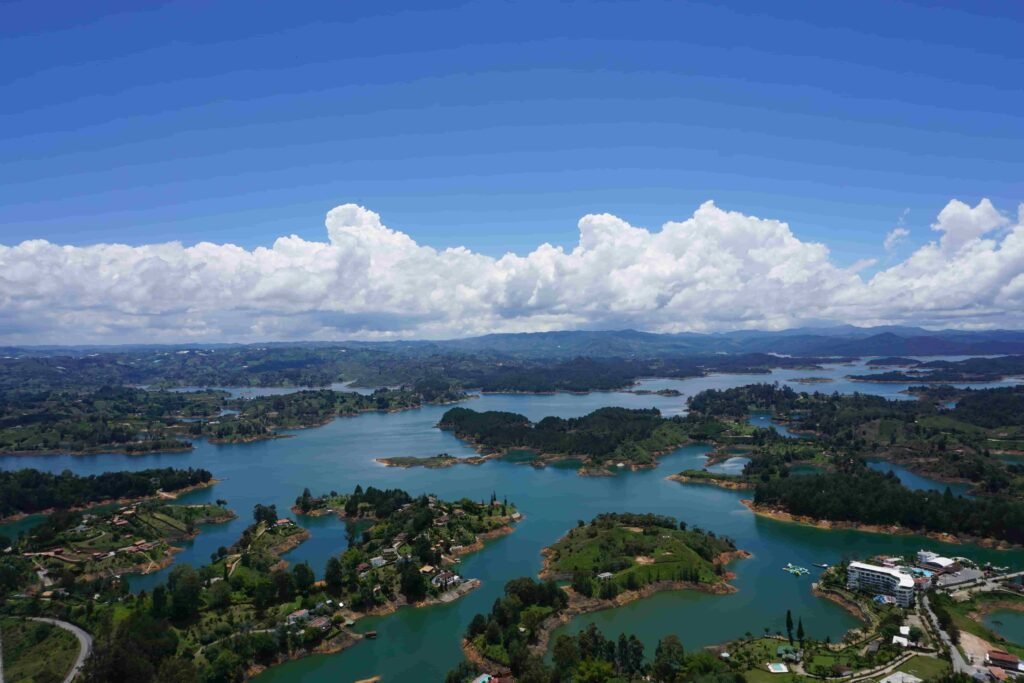
✔️ How to Get Around
There are many easy and reliable ways to get around once you’ve landed.
Ridesharing apps like Uber, In-Driver, and DiDi are great choices.
You can also hire a private driver or use public transportation. Medellín is the only city in Colombia with a metro system, and it works great. This is a great way to discover the city, and rides only cost about $0.50.
Buses are accessible and budget-friendly too. Bogotá’s TransMilenio bus network is efficient and easy to navigate with an app you can use to check routes. In Calí, use Masivo Integrado de Occidente (Mio).
✔️ Meet People
It’s time to start making friends and building a community in Colombia. You can work on this before arriving by joining expat groups, asking questions, and getting to know people. Once you’ve arrived, connect with others, take classes to explore a new interest, and meet people.
Check out community networks like MDE Medellín, which has interest groups including language exchange, yoga, tennis, board games, foodies, trivia nights, tennis camps, and more.
✔️ Blend In
One easy way to immerse yourself in the culture is to pay attention to what you wear. Even though many areas of Colombia are quite hot and humid, Colombians hate flip-flops and only wear shorts if they are at the beach, the gym, or exercising. Most people wear jeans, good shoes, nice shirts, and a jacket for cool evenings. They value looking professional.
Don’t worry about taking a complete wardrobe if you don’t want to. There are many great clothing stores in cities such as Medellín. However, if you wear shoes larger than size 11 or big and tall pant sizes, you may struggle to find a good fit.
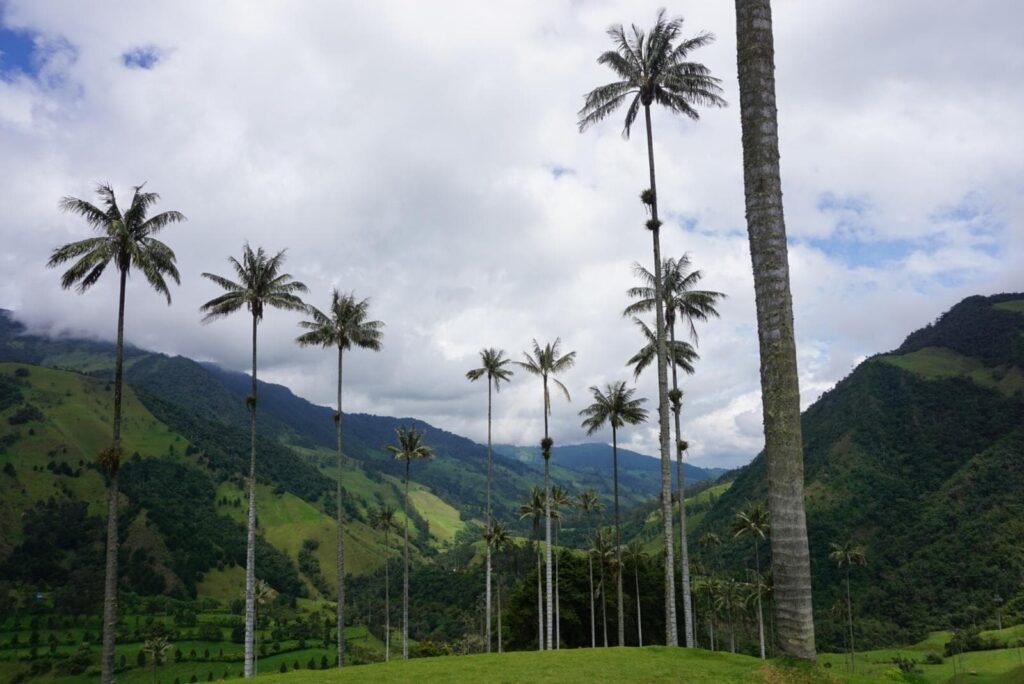
Best Places To Live In Colombia
Now that we’ve covered the steps to moving to Colombia, let’s discuss the top places to live. Medellín, Cali, and Bogotá are the main cultural and economic hubs, but other cities are worth considering too.
Here’s a quick overview of seven of the best places to live in Colombia.
📍 Medellín
BEST FOR: Professionals, Couples, Families BUDGET: Medium WHAT TO EXPECT: Great Community, Excellent Metro, Cultural and Artistic Hub
Medellín is a vibrant city in northern Colombia with beautiful spring-like temperatures, great infrastructure, a strong sense of community, and a bustling industry.
It’s been called the Silicon Valley of Latin America and is especially well known for fashion, textile manufacturing, steel, pharmaceuticals, chemicals, and tourism. Choosing a safe district is important in this city. Some of the top neighborhoods to consider are El Poblado, Laureles, and Bigado.
Digital nomads flock to Medellín, but it is also a great place for families and couples. The MDE Medellín Community offers Colombian citizens and expats ways to connect over shared interests.
📍 Bogotá
BEST FOR: Professionals, Families, Couples BUDGET: Medium WHAT TO EXPECT: Economic, Political, and Cultural Hub, Great Nightlife
Bogotá is the capital city of Colombia and is the epicenter of politics, finance, and culture. Many banks and multinational corporations have subsidiaries here, making it an expat magnet.
Foreigners are attracted to Bogotá for its great cuisine, culture, and affordable cost of living. It is close to other cities and has many parks, green spaces, and a popping nightlife.
This city is located in the Andean highlands, and at 8,500 feet above sea level, expect effects from the elevation when you arrive. Live as close to your employment as possible to avoid heavy traffic, or use the extensive bike lanes to pedal your way around.
📍 Cali
BEST FOR: Professionals, Young Expats BUDGET: Low WHAT TO EXPECT: Warm climate, Beach Access, Sports, Great Culture, Nightlife
Santiago de Cali, usually just Cali, is one of the oldest settlements in South America. It is a trading center and sporting hub known for agriculture and industrial activities.
Cali also has a great nightlife scene, attracting party-loving expats and digital nomads.
With a warm climate, great culture, and a low cost of living, there is plenty to attract expats. Plus, it’s close to the beach. Jobs may be a bit harder to come by here, and infrastructure isn’t quite as developed, but those obstacles aren’t insurmountable.
📍 Cartagena
BEST FOR: Families, Couples, Professionals BUDGET: Low to Medium WHAT TO EXPECT: Colorful Architecture, Caribbean Vibes, Laidback Feel
If coastal life appeals to you, Cartagena could be the perfect fit. This port city on the northern coast offers laidback charm, sunny weather, colonial architecture, and lovely beaches. It also houses multiple UNESCO World Heritage sites, colorful homes, and an old fortress.
This city is iconic, affordable (with mid-to-high-range options), and has excellent educational institutions and warm and friendly locals. Look for work opportunities in tourism, real estate development, education, and healthcare.
📍 Santa Marta
BEST FOR: Adventure and Outdoor Enthusiasts BUDGET: Low to Medium WHAT TO EXPECT: Gorgeous Beaches, National Parks
Santa Marta, only four hours along the coast from Cartagena, is less touristy, more affordable, and has more outdoor activities. It’s a great place to live if you love adventure.
Get PADI certified in nearby Taganga, scuba dive along the coral reefs and through shipwrecks, and explore nearby national parks with white-sand beaches. Hikers will enjoy Tayrona National Park.
With modern amenities, festivals, amazing seafood, and language meetups, there are plenty of reasons to move here.
📍 Bucaramanga
BEST FOR: Young Expats, Retirees BUDGET: Low WHAT TO EXPECT: Amazing Parks, Art and Culture, Nightlife
Are you looking for a green city in the mountains? If so, Bucaramanga in the Santander Department of Colombia could be just the place. This underrated city is built on an Andean Mountain plateau, is packed with green spaces, and is home to art exhibitions, author events, and many universities.
Nightlife makes it a fun spot for party-goers, but the abundance of parks also makes it a prime place to relax. The low cost of living makes it very accessible, and attractive to retirees looking for a spot off the beaten path.
📍 Pereira
BEST FOR: Families, Students, Young Expats BUDGET: Medium WHAT TO EXPECT: Welcoming locals, Modern Conveniences, Biodiversity, Coffee Culture
Beautiful scenery, delicious coffee, and fun activities make Pereira a wonderful place to call home. It is a vibrant city with many universities, shopping malls, nightclubs, cafés, great healthcare, and good public transportation.
Unlike Bogotá, where air quality is a problem, Pereira’s skies are clear and there are lots of outdoor spaces. There are plenty of opportunities to get active as well through weekend trips to nearby flora and fauna sanctuaries, coffee plantations, and regional parks.
Party-goers are attracted to the nightlife on Simon Bolivar Avenue, while sports enthusiasts can join the cheering crowds at the 30,000-seat stadium.
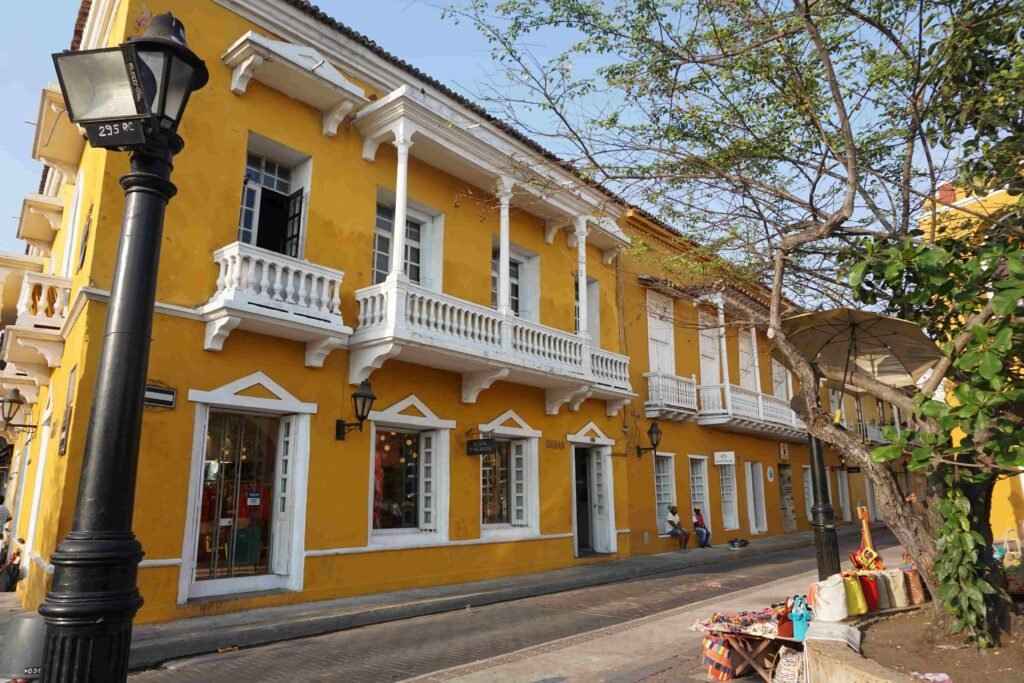
Is It Safe To Live In Colombia?
Yes, it is relatively safe to live in Colombia. In fact, Colombia has been called the “new darling of South American travel” and received over five million visitors in 2023.
Despite its prior disrepute, Colombia has made amazing strides in safety. Although crime rates remain somewhat high and there are still risks, it is still a wonderful place to call home. That said, it is crucial to take appropriate safety precautions, choose a safe and reputable place to live, and avoid dangerous areas.
Is It Expensive To Live In Colombia?
Colombia has a fairly low cost of living, especially compared to Europe or the US. Most expats spend between $900 and $1500 in cities, though this varies from place to place.
According to Expatra, a couple in Colombia spends an average of $200 to $300 on groceries, $70 to $120 on utilities, $30 to $50 on Internet, $150 to $200 on eating out, and $60 to $120 on transportation every month.
Frequently Asked Questions About Moving to Colombia
Moving to Colombia could be a great idea if you enjoy cross-cultural experiences, speak Spanish (or are willing to learn), and are attracted to the country’s landscapes, weather, and cuisine.
Yes, you can move to Colombia from the UK. The UK government offers guidance for living in Colombia.
Most people need an income of $1000 to $2000 a month to live comfortably in Colombia, though the cost of living can be even lower in rural areas and small cities. Be sure to factor in moving and visa costs.
Yes, foreigners can live in Colombia. Although getting residency and work visas are hurdles for moving overseas, Colombia has much to offer expats looking for a new place to call home.
Conclusion
Choosing the best visa for your situation, gathering all the documents, and getting organized for moving to Colombia will require research, planning, and an investment of time and money. But it’s a great place to live. Beautiful landscapes, access to modern amenities, a vibrant culture, and a low cost of living make this South American country a true gem.
Hello and Welcome!

We started our family travel blog in hopes of supporting other families move abroad and travel the world. Through straightforward, sincere and supportive information we hope to provide a reliable guide for those moving overseas with a family and traveling the globe.
